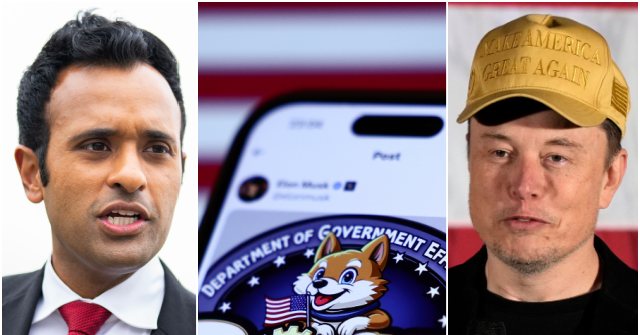Donald Trump’s administration is characterized by its ambitious plans for drastic governmental reforms, notably the creation of the Department of Government Efficiency (DOGE) aimed at cutting federal spending by an extraordinary $2 trillion. He has enlisted the help of notable figures such as Elon Musk and Vivek Ramaswamy for this endeavor. However, established institutions in Washington, often referred to as the “Swamp Empire,” are pushing back against these proposals. Critics from various media outlets and political analysts have voiced their skepticism, likening DOGE’s mission to impracticality and mockery, suggesting that Musk’s business approach may not translate effectively to governmental operations. A historical overview of previous attempts at federal efficiency, such as the Hoover Commission and the Simpson-Bowles Commission, reveals that while some achieved limited success, the overall trend of federal spending has been upward, indicating the challenges DOGE may face.
Despite the criticism, there is an undercurrent of public discontent towards federal spending, as many Americans express dim views of government efficiency. Trump’s history of reshaping public discourse, known as moving the Overton Window, plays in favor of DOGE’s ambitions as the political climate appears ripe for discussions about government spending. The technological advancements that have drastically reduced the cost of consumer goods, exemplified by venture capitalist Marc Andreessen’s references to declining television prices, are also factors promoting the narrative of efficiency. Musk’s ability to drastically cut costs at SpaceX and his recent restructuring of Twitter (X) serve as tangible illustrations of what could potentially be achieved in government through innovative technological approaches.
Skeptics, however, maintain that merely downsizing bureaucracies may not significantly impact the financial goals of DOGE. They assert that the largest expenditures stem from entitlement programs like Social Security, Medicare, and Medicaid, as well as the national debt. This means that without addressing these core programs, achieving a $2 trillion cut remains a daunting task. While there is a demonstrable issue with waste, fraud, and mismanagement of funds in several federal programs, historical resistances within Congress make it hard to target these funds effectively due to established political interests that rely on government allocations to satisfy constituent needs.
Compounding matters are broader socioeconomic forces—such as Baumol’s Cost Disease and Wagner’s Law—which render government programs naturally more expensive over time, particularly those that cannot be easily automated, like education and military spending. Even as improvements in technology are suggested, societal readiness to embrace these changes remains uncertain. The reality that dynamic lobbying, public sentiment, and vested interests often defend government expenditures complicates the potential for significant reform. Thus, anyone looking to trailblaze a path toward budgetary reductions must not only advocate for cuts but also present alternative models that promise to maintain or even enhance public service.
In seeking solutions, Trump’s team may find promise in the vast untapped natural resources within the country. The potential of these resources, including oil and gas, could offer significant financial support to government operations, potentially facilitating a reduction in federal reliance on tax revenues while promoting energy independence and economic growth. Recommendations suggest establishing a natural-resource trust fund to ease the budgetary burden of popular programs like Medicare. Such a strategy could potentially transfer long-term health care financial responsibilities away from the national budget by utilizing energy revenues, supporting fiscal conservatism while maintaining essential services for constituents.
Overall, while the ambitions laid out under DOGE present an innovative approach towards reducing federal spending, the implementation of such plans will involve considerable challenges. Success will not only depend on identifying areas of wasteful spending but also on strategically repositioning funding mechanisms and influencing public perspectives on the role of government. By leveraging America’s natural resources and reimagining budgetary constraints, the proposed initiatives could work toward a pragmatic balance between efficiency and the fulfillment of public needs, thus propelling Trump’s MAGA agenda forward amidst a complex political landscape.

